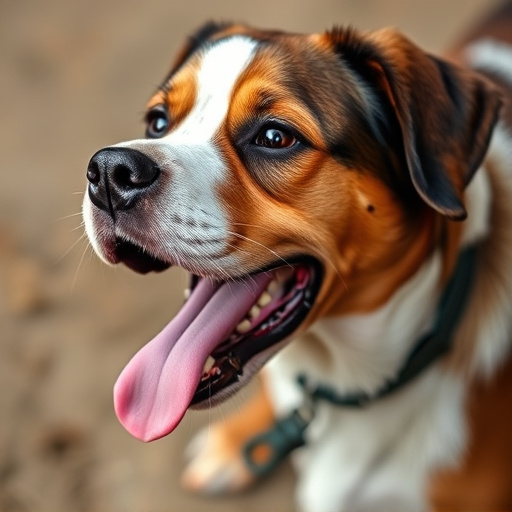Dog spray, a self-defense tool against aggressive canines, uses capsaicin to temporarily disable dogs. Upon exposure, quickly rinse affected areas with water and mild soap for 15 minutes to remove irritants and prevent irritation or infections. "Wash Pepper Spray off Dog Fur" is crucial for both animal comfort and health. Preventative measures include wearing protective clothing, avoiding strong scents, regularly washing fur, training pets, and carrying deterrence spray.
“Staying safe during encounters with aggressive dogs is paramount, especially considering the prevalence of dog spray as a defense mechanism. This article equips you with essential knowledge on self-defense against dog spray, focusing on understanding its types and effects. We’ll guide you through immediate response strategies post-exposure, effective cleaning techniques to wash pepper spray off dog fur, and preventative measures to safeguard both you and your pets. By mastering these skills, you enhance your safety and peace of mind in various settings.”
- Understanding Dog Spray: Types and Effects
- Immediate Actions After Coming in Contact with Dog Spray
- Effective Cleaning Techniques to Wash Pepper Spray Off Dog Fur
- Preventative Measures: Protecting Yourself and Your Pet from Dog Spray Attacks
Understanding Dog Spray: Types and Effects
Dog spray, also known as dog pepper spray, is a specialized self-defense tool designed to temporarily incapacitate dogs. It’s important to understand that there are various types of dog spray on the market, each with different formulations and strengths. Typically, these sprays contain capsaicin, the same compound found in chili peppers, which irritates the dog’s eyes, nose, and throat, causing them to react by panting, drooling, or even temporarily losing consciousness.
When facing a potentially aggressive dog, quick thinking is crucial. The first step after being sprayed is to wash pepper spray off the dog’s fur as soon as possible. This involves rinsing the affected area with large amounts of water and neutralizing any residual spray with a mild soap solution. Proper decontamination ensures that the dog does not continue to experience discomfort or irritation, and it also helps prevent potential secondary infections if the dog licks itself due to itchiness.
Immediate Actions After Coming in Contact with Dog Spray
If you’ve been targeted by dog spray, the first step is to remain calm and act quickly. Upon contact, immediately seek fresh air and move to a safe, open area away from the source of the spray. This is crucial as breathing in the irritants can cause severe lung damage.
Next, wash pepper spray off your skin and any exposed areas of your body with cold water for at least 15 minutes. For dog fur, use a damp cloth or wet towel to wipe down the affected areas gently, ensuring you remove as much of the spray residue as possible. Do not rub, as it may spread the irritants further. This action is vital in minimizing discomfort and preventing long-term irritation.
Effective Cleaning Techniques to Wash Pepper Spray Off Dog Fur
After a dog sprays pepper spray, the first step in self-defense is to quickly and calmly remove the chemical from your skin and clothing. However, washing Pepper Spray off Dog Fur requires special care. Start by rinsing the affected area with large amounts of water, ensuring that you flush the eyes and nose thoroughly. This initial rinse helps dilute the pepper spray, making it easier to remove.
Use a mild soap designed for sensitive skin, as harsh detergents can irritate the skin further. Apply the soap to a damp cloth or sponge and gently wash the fur, focusing on the areas where the pepper spray was sprayed. Rinse again with plenty of water, making sure no residue remains. For extra protection, apply a pet-safe moisturizer to help soothe and hydrate the skin after exposure.
Preventative Measures: Protecting Yourself and Your Pet from Dog Spray Attacks
Preventative measures are key to safeguarding yourself and your pet from dog spray attacks. If you know you’ll be in areas where dogs roam, ensure your clothing is covered, wearing long sleeves and pants, and avoid wearing any perfumes or strong scents that could attract unwanted attention. Regularly cleaning your pet’s fur with a gentle shampoo can help remove any residual pepper spray, as leaving it on the coat may cause irritation or discomfort.
Additionally, train your dog to recognize and respond calmly to unfamiliar animals. Teaching basic commands like “sit,” “stay,” and “leave it” can give you valuable time to assess a situation if a confrontation arises. Keep your pet leashed in public spaces, especially in areas with loose dogs, and always carry a spray or other deterrent designed for dog deterrence.
Dog spray can be a dangerous and unexpected attack, but understanding its types, effects, and taking preventative measures can significantly enhance your self-defense capabilities. After an encounter, promptly washing pepper spray off your dog’s fur is crucial to minimizing irritation and discomfort. Remember, knowledge is power; by arming yourself with the right techniques and strategies, you can protect both yourself and your furry friend from potential harm.
